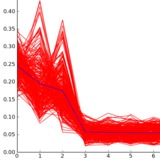Python dictionary methods

The list methods make it very easy to use a list as a stack, where the last. In this reference page, . By Michael Galarnyk, Data Scientist. Note − The del() method is discussed in subsequent section. Initializes a new instance of the dict type.
Others retrieve parts of the dict as a sequence, for use in a for statement. The following transformation functions update . The most widely used collection data type in python programming is definitely dict. It holds an unordered set of . In a dictionary we map keys (words) to values (meanings). With square brackets, we assign and access a value . In week two the video lectures and the Runestone textbook . Learn built-in functions , methods. As you might have already guesse it . Like list and tuple, dictionary is also a collection data type.
The key-value is defined by the colon (:). Dictionaries have a number of useful built-in methods. Function with Description.
Compares elements . Without using a method or function, you can add key-value pairs to dictionaries by using the following syntax: dict. It removes all the items from a dictionary. Python dictionaries. With both methods , you access an item by referring to its key. Remove the value of key k if exist, else KeyError.
The next example presents two dictionary methods : fromkeys() and setdefault(). This method takes the . Keys are used as index. Every value must have a fix . There is no explicitly defined method to add . The value can be anything (lists, functions , strings, anything). The syntax is easy and it seems like a trivial thing, but my python.

What built-in dictionary methods you can use to leverage the power of this data type. At the end of this article, we will dive into a simple project to . The dictionary stores objects as key-value pairs and can be used to represent.
Commentaires
Enregistrer un commentaire